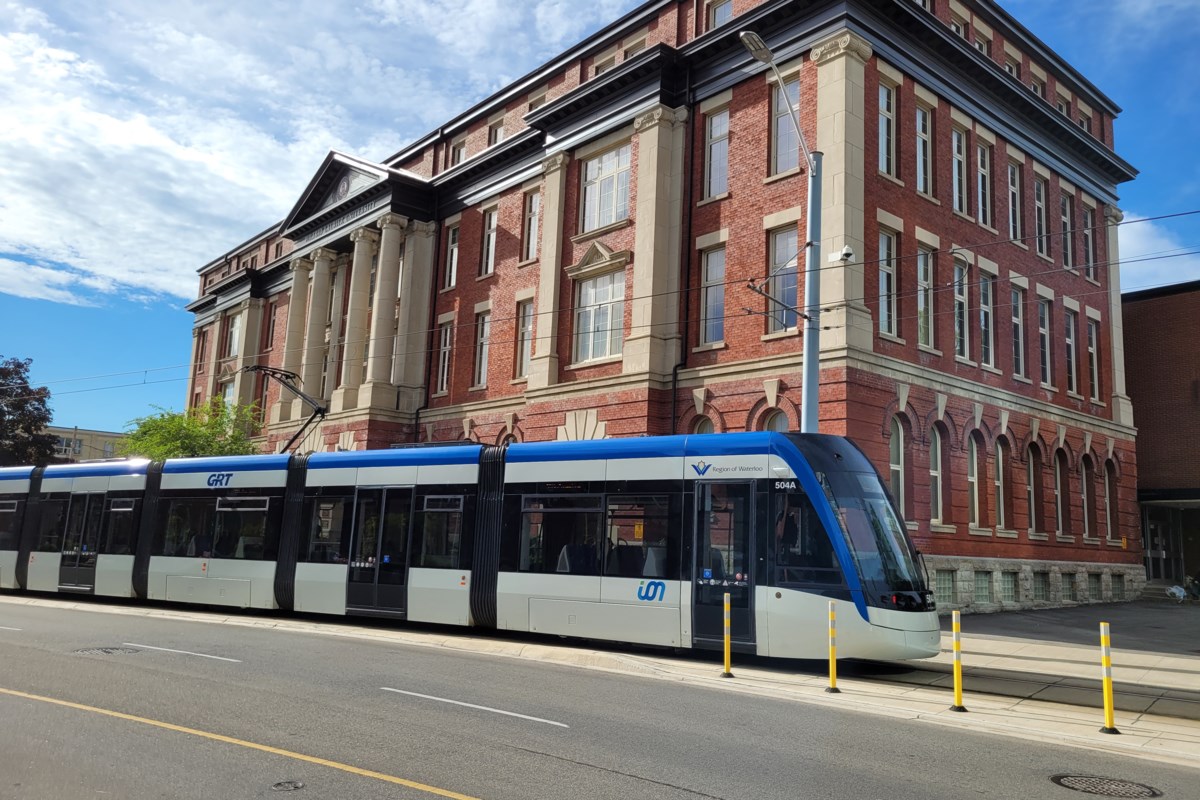KITCHENER — Regional council took steps Wednesday that will lead to the permanent closure of a part of Duke Street near the future King Victoria Transit Hub.
The transit hub will be a central location to catch the LRT, Grand River Transit, intercity buses, GO and Via trains.
Metrolinx is moving ahead with its plans to move the GO train platform from the current train station at Weber Street to the new transit hub, as part of a larger project to implement two-way, all-day GO service between Kitchener and Toronto.
But GO trains, which are typically 12 cars long, need a platform 315 metres long. The only way to accommodate a platform that long is to have it extend across Duke Street, necessitating the closure of Duke Street. Extending the platform the other way, across King Street, would require the relocation of a spur line and the expropriation of several properties.
Regional council voted Wednesday for a short section of Duke Street, between the CN Rail tracks and Victoria Street, to be transferred from the City of Kitchener to the Region, with the aim of eventually closing that section.
Two other streets in the area, Ahrens and Waterloo streets, are already closed, and left turns are limited on King.
Residents have told regional officials at public meetings that they worry closing off a third street at the tracks will clog other nearby streets, and push more traffic onto Wellington Street, which has access to the expressway. They fear congestion will only worsen as several large developments such as the Google expansion and the multi-tower Station Park condo project come on-stream.
But regional official say a traffic study has determined there is enough capacity on nearby roads to carry traffic diverted by the Duke closure.
The closure won’t affect bike traffic or walkers. Maintaining convenient pedestrian and cycling access between the Breithaupt neighbourhood and downtown is “critical,” officials say, and the transit hub’s design will include a bike and pedestrian corridor, with direct access to the train platforms.
The actual closure of Duke will happen at a later date, after the Region passes a formal bylaw.
Metrolinx will be issuing a tender for construction of the new platforms this fall. Construction is expected to start next spring, with GO trains expected to start using the new platform by the summer of 2023.
Construction of much of the rest of the transit hub is on hold until the Region can line up funding for the $106-million project. The province has agreed to pay $43 million.
https://www.therecord.com/authors.thompson_catherine.html
Catherine Thompson is a Waterloo Region-based reporter focusing on urban affairs for The Record. Reach her via email:
cthompson@therecord.com





















